Ahead of Fabian Perez’s UK tour at Clarendon Fine Art and Whitewall Galleries, The Art Collector asked the artist about his new collection entitled: El Amor.
Perez’s name is instantly recognisable within the international art circuit. Having won countless presitigous awards for his work, painted numerous high-profile individuals and being one of the official artists to the London 2012 Summer Olympic Games, his UK tour this spring summer is a landmark exhibition.
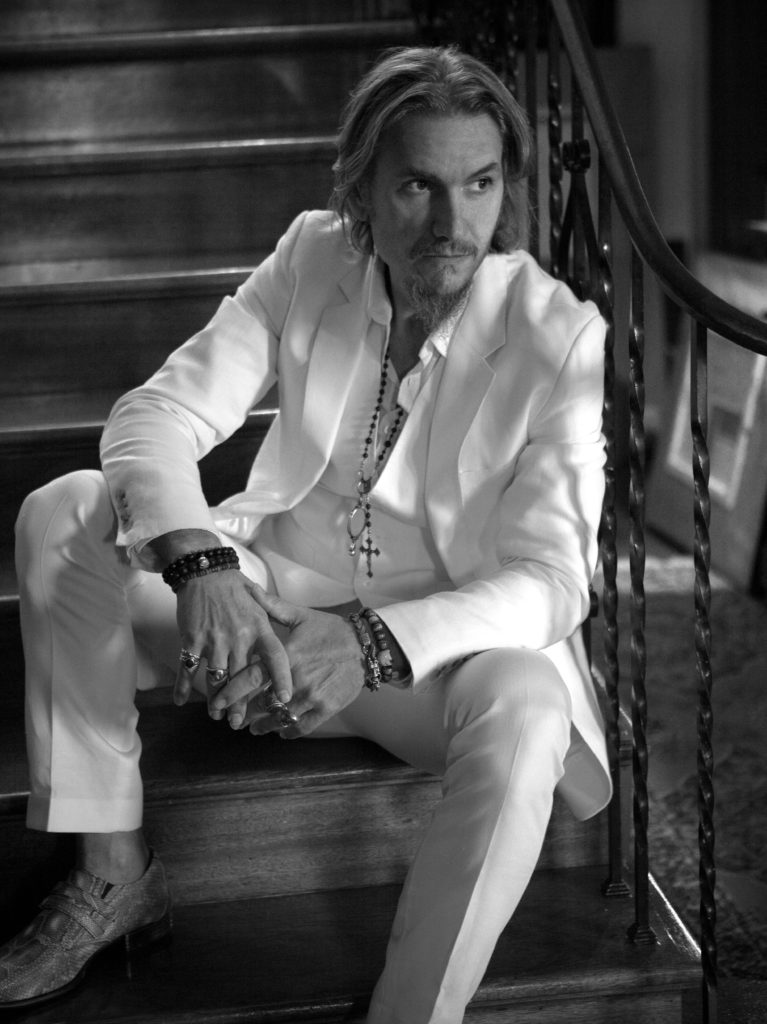
Can you tell us about your exhibition with Clarendon Fine Art? Is this your first UK exhibition? What are your favorite works on display in this exhibition?
I started my solo-show exhibitions around the UK back in 2005. Since then, I have come back 2-3 times a year. Whilst I am visiting the country during tours, I travel from one city to another, attending galleries where my art is being exhibited. I have done over 400 solo shows in the UK over 13 years.
It was my honor to exhibit in the first Clarendon Fine Art which opened in Mayfair in 2010. With the passage of the years, the gallery has opened new branches around the UK and I have exhibited in all of them. It is always a pleasure because the team shows immense professionalism at work and especially a love for art – which is the first step towards making a successful gallery.
For this last exhibition I have created a series of a couple on a balcony. Actually, my wife Lucy and I are the subjects. This is the first time I have painted a couple on a balcony – in the past I have painted lone female figures, and I think the impact is very different. I hope my British collectors will appreciate it.
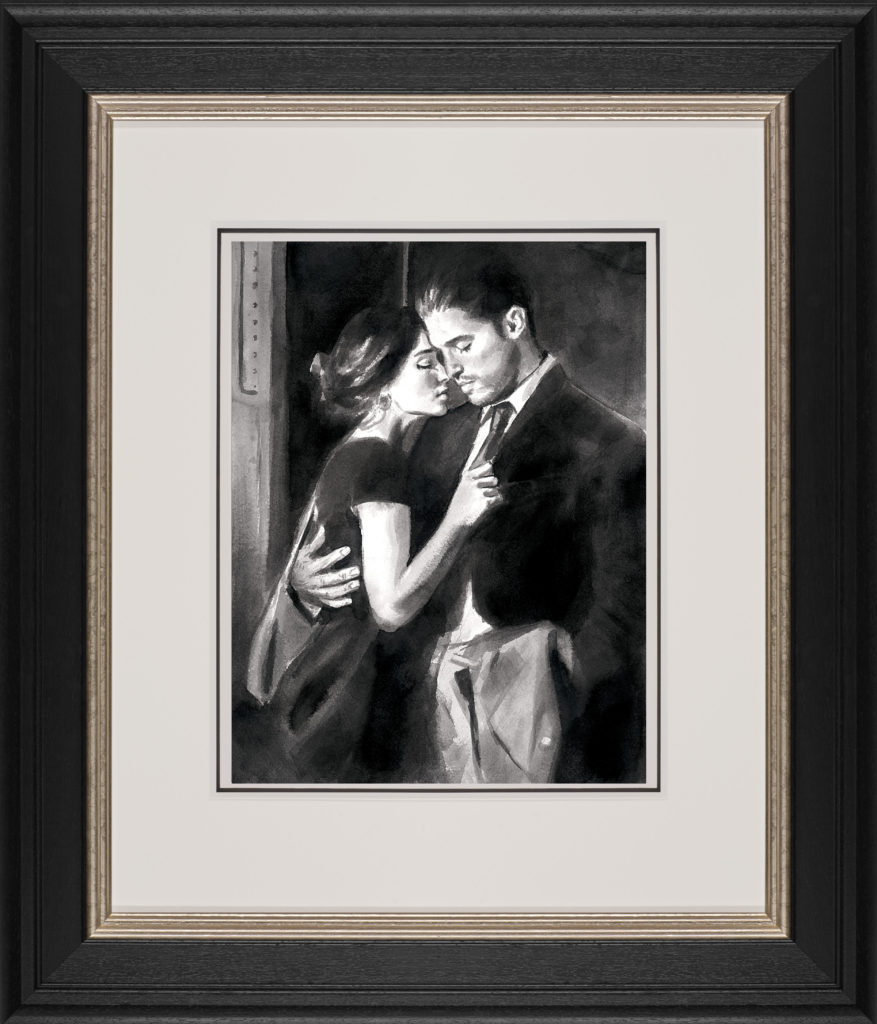
Can you tell us about your art movement, Neo Emotionalism? What was the genesis of this expression?
As a follow up how do you see the evolution and continuation of this movement (by others)?
I have always explained that for a long time, I did not want to define my way of painting, so as to not limit myself. However, a few years ago I felt the need to create my own movement, that I called Neo-Emotionalism – a movement where the importance of creating with emotion goes beyond the technique used. Neo-emotionalism will be recognized by the artists who, after creating their work, will simply feel liberated, and also by the viewer when they feel the creation in their heart. Now on social media I am beginning to see new artists that tag Neo-emotionalism, who identify with the flexible themes that I have expressed. They post their paintings created with emotion.
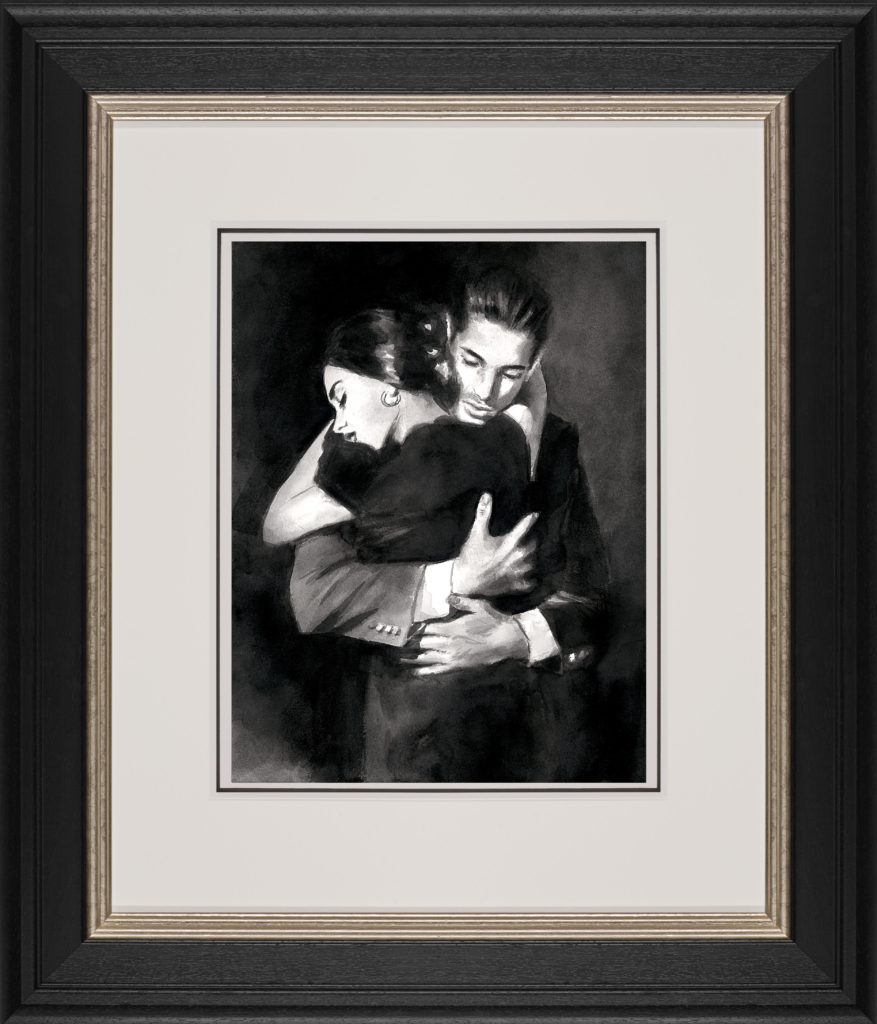
What medium do you prefer to work in?
I usually work with acrylics because it dries faster and I can add texture quicker. The fact that I am not dependent on the media to dry allows me to be more focused on the execution. Acrylics are water-based colours and do not need the use of toxic solvents to clean the brushes, which is far more environmentally friendly. Even though acrylics quickly on the canvas, I can save my paint remnants for a couple of hours allowing me to use it later or the day after. That way I don’t have to dispose of paint all the time – another way of helping our planet.
I also use watercolor, ink and charcoal.
Is there a particular artwork of yours that is your favorite? If so, why?
It is difficult to choose because every creation is like a new child. However, if I have to choose one, I’ll say Untitled II. It evokes pretty much how I live my life. I never follow the crowds or trends. I don’t agree with the majority way of thinking or acting, and that makes me an eccentric to many people. In this painting, I have portrayed myself and I used white hair as a symbol of my experience because although I was a young person, I had already had many experiences, both good and bad. Too many for an individual of that age!
Can you tell us about your collaboration with the Leo Messi Foundation? Is this something you will repeat – perhaps with another foundation?
Back in 2011, I was asked to create the trophy for the Best Player of the American Soccer Cup that took place in my native country, Argentina. On the same occasion, I collaborated with the Leo Messi Foundation and created three artworks that would be used raise funds for charity.
I work with charities all the time. This year I collaborated with After School All Stars in Los Angeles, which is an organisation that helps students succeed in school and in life by providing comprehensive after school programming and transformative opportunities. I also sponsor the Autism Movement Therapy Inc. a nonprofit organization, focused on serving the autism and special needs community through providing a structured movement and music program, as well as providing advocacy and community outreach to create understanding and bring dignity to the spectrum community across the globe.
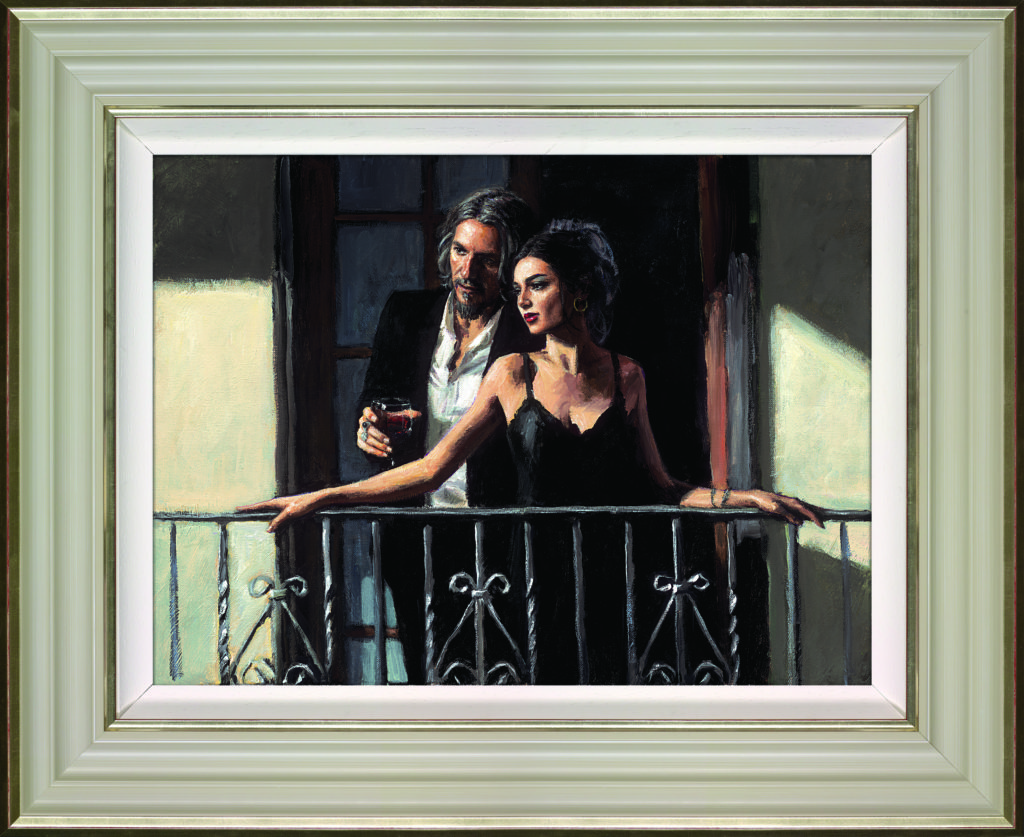
If your art had a nationality what would it be? Would it be distinctly Argentinian?
As a follow up, is there a specific characteristic that defines contemporary Argentinian art? And by extension South American art
I cannot assign my art to a specific nationality. My artwork reflects the scenes and memories I experienced in the many countries I have lived in. Each place that I have been has left an impression on me, and has some influence in my creations. Even though my collections of Balconies and Tango dancers are a representation of Argentine culture, my studies of the Geishas, the Venetian collection, and the Flamenco dancers are inspired by the other cultures I faced in my life.
What advice would you give to an emerging artist from South America?
To emerging artists, not only from South America but from the rest of the world, I would like to tell them please to focus on what makes them happy more than on what they want to change. Creativity which comes from dissatisfaction can make you very negative as an artist.
Mother Tereza once said “Don’t ask me to get tougher and complain against war. Ask me for a manifestation in favor of peace and I will be there”.
And finally, always remember that art is an expression of emotion through some technique. When a painter transmits his emotions to the canvas, and one of those emotions is love, he paints even better. Clear goals, discipline, and self-confidence. The more of these qualities an artist can gather, the further they will be able to go.
You have had many important portrait commissions in your life. Who has been the most significant and, if you could choose an individual – living or dead – to portray who would it be?
Even though I am more into spirituality than religion, I would say Pope Francis was one of the most significant portraits commissions of my career. As an artist, I wanted to portray his sincere humility and immeasurable compassion. Pope Francis said to me, “When I see this painting, I see a reflection of myself.” That was enough for me to understand that I had achieved my goal of portraying his soul. The next “Living Legend” I would like to paint is Fernando Botero, the last living of the Old Masters.
Perez’s work is currently on display in Clarendon Fine Art galleries in Hampstead and Wimbledon, as well as Whitewall galleries in Weybridge, St Albans, Bluewater, Guildford and Manchester. The tour continues with meet and greets in the following locations:
| Wednesday | 26th June | 6-8pm | WW York | |
| Thursday | 27th June | 6-8pm | WW Newcastle | |
| Friday | 28th June | 6-8pm | WW Derby | |
| Saturday | 29th June | 11am-1pm | WW Merry Hill | |
| Saturday | 29th June | 2.30-4.30pm | WW Stratford | |
| Saturday | 29th June | 7-9pm | CFA Chelsea |

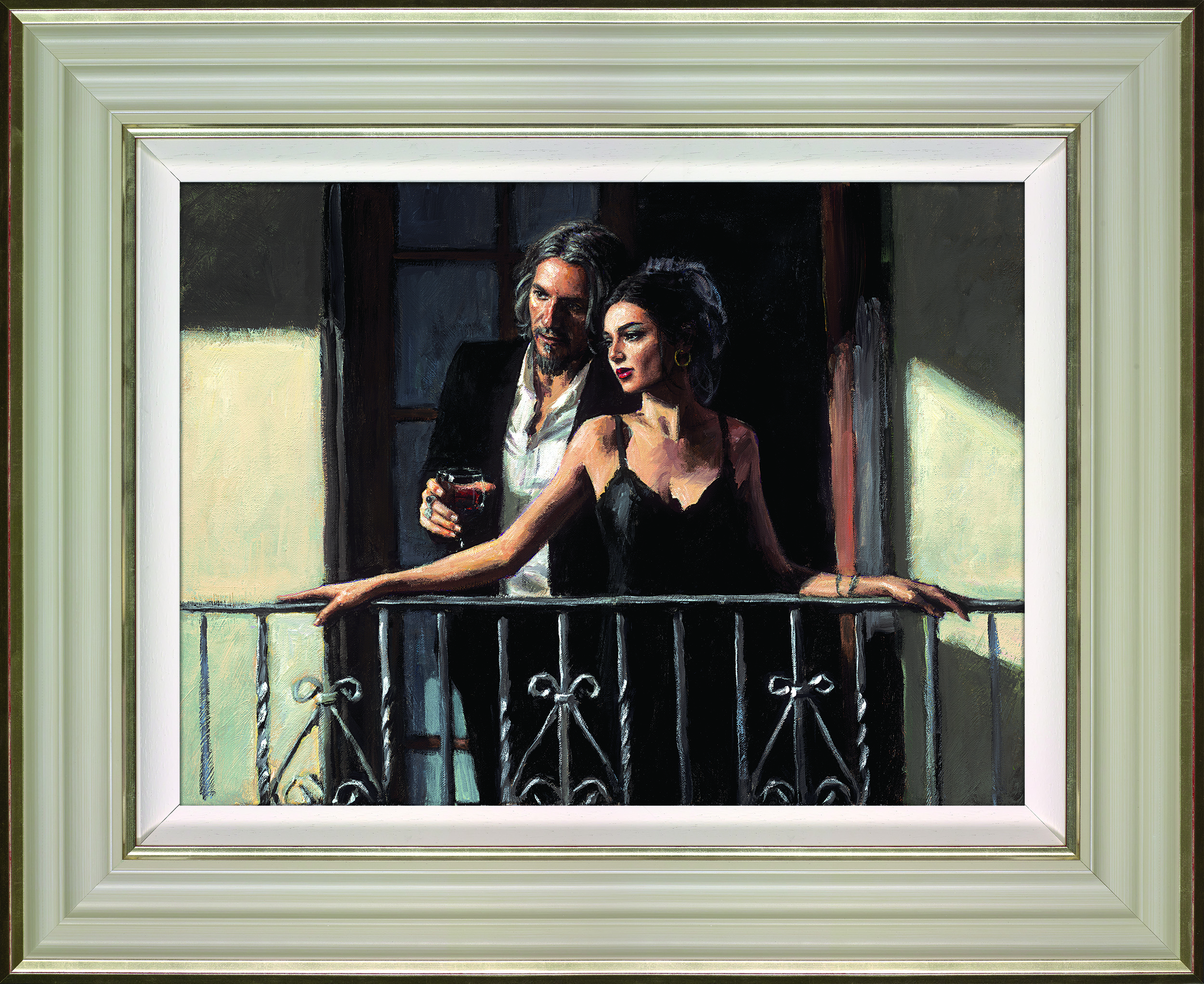

 Saving...
Saving...